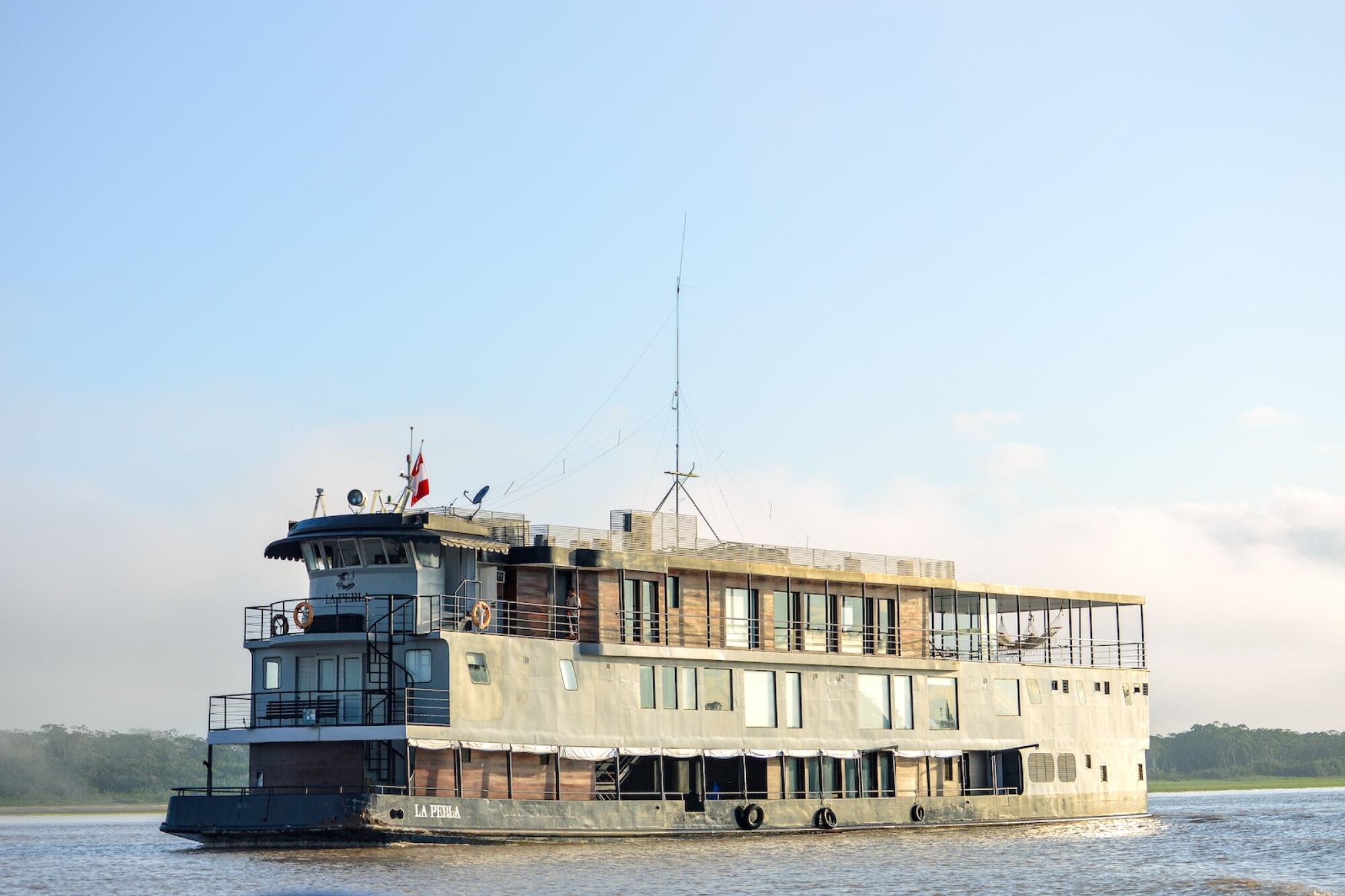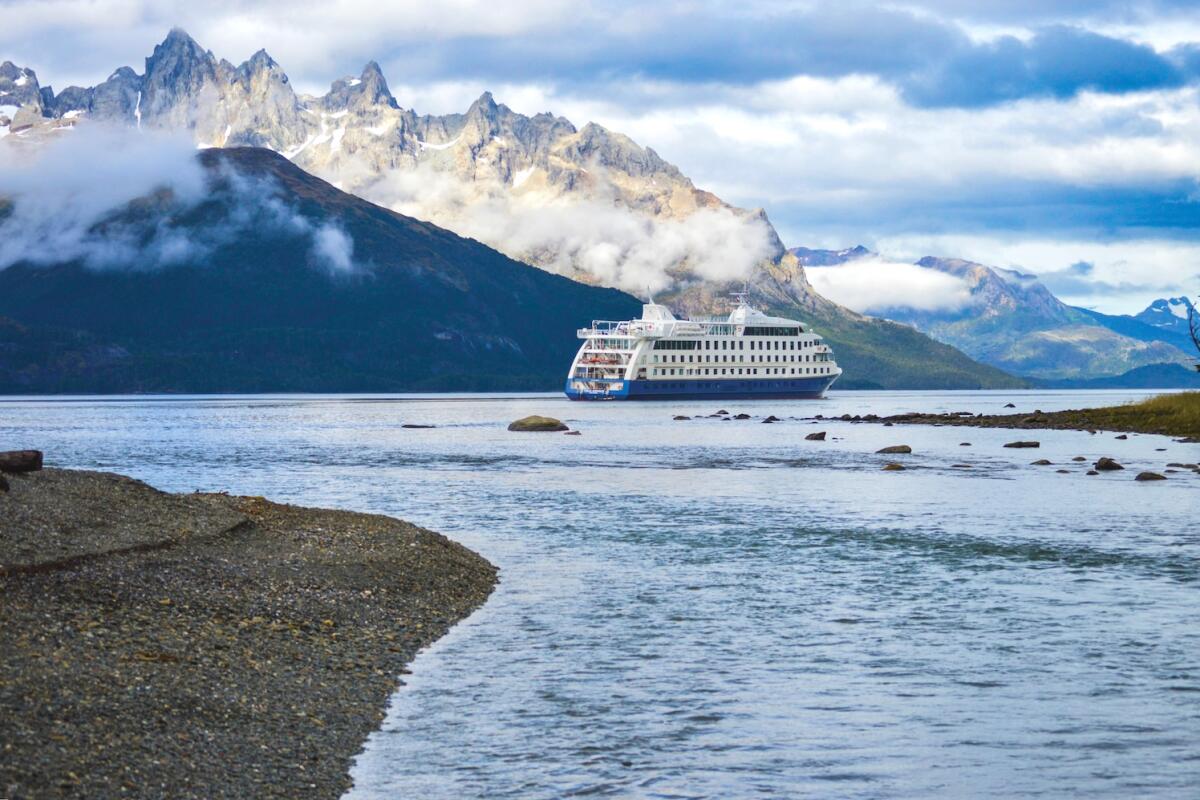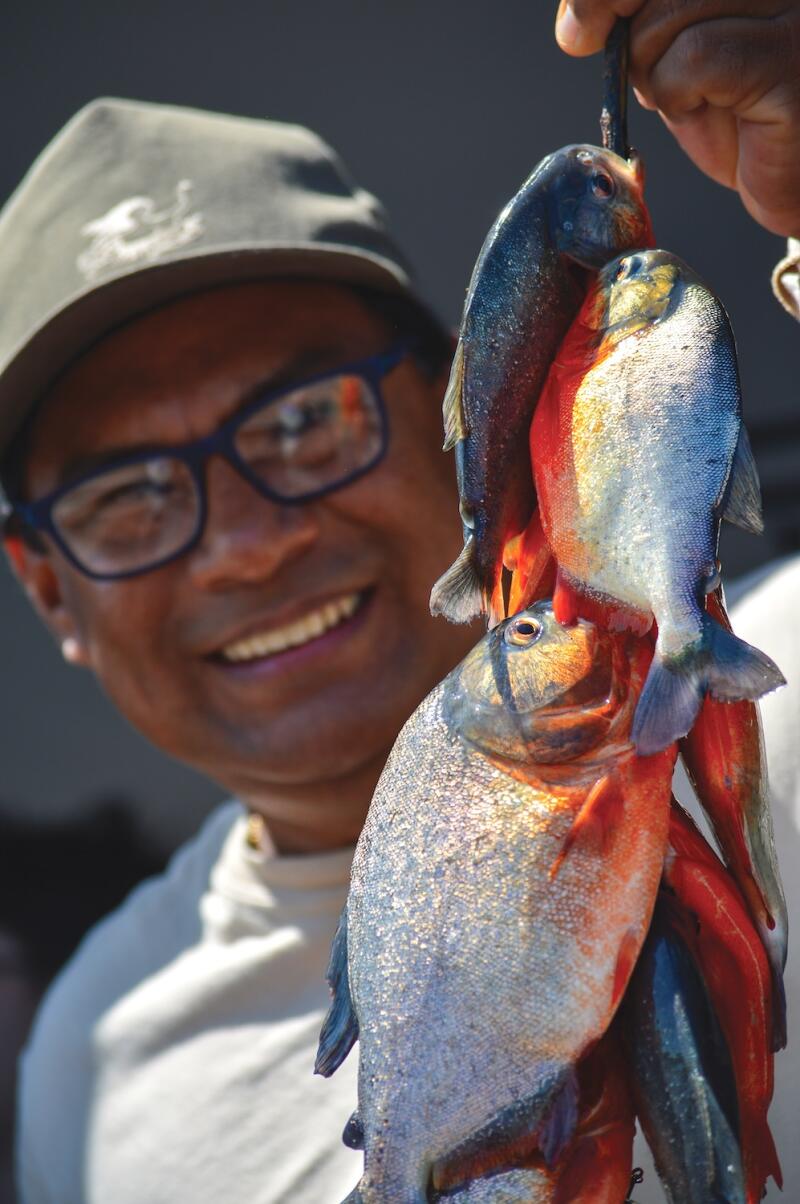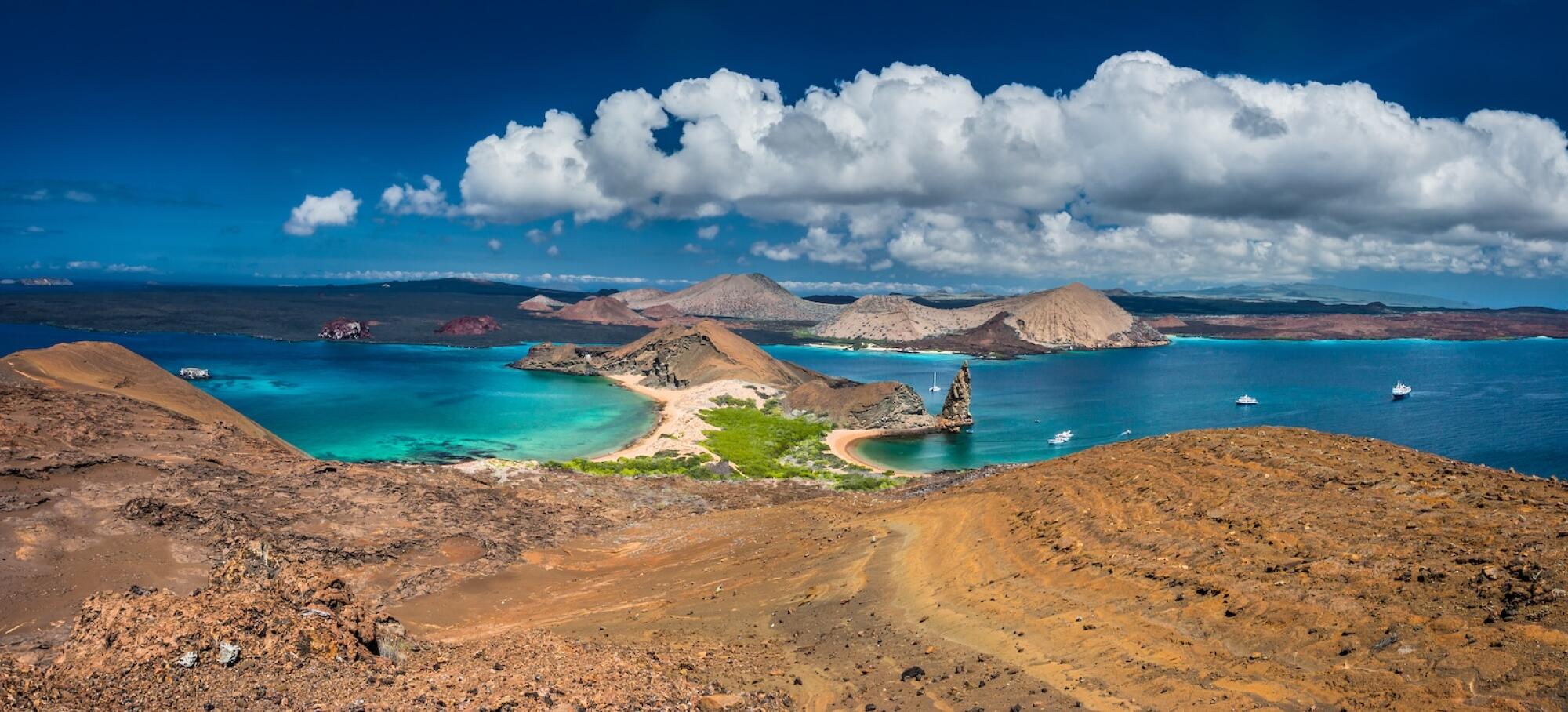
- Share via
Galapagos, Patagonia and Amazon cruises are life-changing experiences in the Southern Hemisphere.
Rebounding from a post-pandemic slump, the cruise industry racked up a record number of passengers for 2023 – more than 31 million passengers around the globe. While large ships that carry as many as 7,600 cruisers accounted for the largest numerical increase, the biggest percentage growth was in the “expedition cruise” sector.
If you’ve never heard that term before, an expedition cruise is a smaller ship (normally under 200 passengers) that explores more adventurous areas, in many cases, places where the larger ships won’t fit.
From the Indonesian archipelago and the South Pacific isles to Canada’s Northwest Passage and the Antarctic, these regions offer ideal conditions for expedition cruises. Yet one of the best places – an area that pioneered small, adventurous cruises many decades ago – is South America.



Patagonia
Anchoring the bottom end of South America, Patagonia boasts spectacular scenery, incredible wildlife and hundreds of pristine islands protected within the confines of huge national parks.
One of the only ways to explore these remote islands is an expedition cruise between Punta Arenas in Southern Chile and Ushuaia on the Argentine side of Tierra del Fuego Island.
Starting out with crossing the fabled Strait of Magellan, southbound ships slowly make their way through the islands. Several times each day, everyone piles into inflatable Zodiac boats for shore excursions led by nature guides.
And they’re all surprisingly different. Thousands of Magellanic penguins raise their chicks on the tiny Tucker Islets. Ainsworth Bay is renowned for its resident elephant seals, as well as a chance to spot majestic birds like the caracara falcon and Andean condor.
Farther south is the Beagle Channel – named for the Royal Navy ship that took Charles Darwin along this same route in 1833 – and a string of frozen, giant tidewater ice sheets called Glacier Alley. Reaching Wulaia Bay, there’s time for a hike through a moss-draped forest to a lofty viewpoint and browse through a small museum with exhibits on the Yaghan people who first settled this island around 10,000 years ago.
For many, the ultimate highlight of the cruise is a visit to legendary Cape Horn, the southernmost tip of South America. Steep wooden stairs lead to a tiny lighthouse atop the island and a chance to meet the lightkeeper and his family, posted to the remote island for an entire year.
Reversing course and heading north, the ship eventually reaches Ushuaia, a town that’s made a remarkable transition from remote penal colony (the old prison is now a museum) to the outdoor adventure sports hub of Tierra del Fuego (hiking, mountain biking, fishing, skiing, snowboarding and more).
Australis Cruises voyages through the Patagonian isles between late September and early April in two modern expedition ships that hold 200 passengers. Rates for the four five-day cruises start at around $1,638 per person.



The Amazon
It may not be the world’s longest (that honor goes to Africa’s Nile), but the Amazon carries more water by volume than any other river and is without a doubt one of the most exotic, adventurous places where you can cruise.
Some of the big cruise companies send ships up the Amazon almost 1,000 miles upriver to Northern Brazil’s Manaus. But the river is so wide at that point (almost two miles) and the area so built up (the city now boasts more than two million people), it’s hard to commune with the Amazonian rainforest.
The best way to get up close and personal with the world’s most celebrated jungle is an expedition cruise farther along the river. Like those that depart from Nauta, a tiny waterfront outpost near Iquitos in the Peruvian Amazon.
Nauta’s claim to fame is that it marks the start of the actual Amazon, the spot where two other mighty watercourses (the Ucayali and Marañón) merge to form one of the world’s largest rivers.
Pacaya–Samiria National Reserve – one of the largest national parks in the entire Amazon Basin – lies just upstream from Nauta.
A typical cruise chugs along the Marañón to secluded Amerindian settlements where you get a glimpse of daily life in the Amazon. But most of the shore landings focus on nature. Pacaya–Samiria is home to millions of creatures, including apex predators like the jaguar and anaconda, although they tend to be wary of humans. This means you’re more likely to see giant river otters, pink river dolphins, sloths, monkeys and a wide variety of tropical birds.
During the daytime, passengers can undertake guided jungle hikes, try their luck at local-style fishing or take a swim in the river. After dark, smaller boats probe tributaries for nocturnal creatures and members of the cruise boat staff entertain passengers with folk songs.
Iquitos-based Jungle Experiences offers cruises along the Ucayali and Marañón in modern riverboats, like the family-oriented, 30-passenger La Perla and luxury 40-passenger Zafiro. Voyages range from four to eight days with rates starting at $1,480 per person.

Galapagos
The most awesome thing about the Galapagos Islands – and there are many – is the fact that most of the animals seem to have no fear of human beings. You’re not allowed to touch the wildlife. But the critters don’t abide by that same restriction: they can waddle, splash or crawl up to you. And many do, curious about these human creatures that walk or swim among them.
In the remote archipelago located around 500 miles off the coast of Ecuador, close encounters of the animal kind are frequent and often life-altering. Sunbathe on a secluded beach with sea lions, snorkel with penguins or those gnarly looking “mini Godzillas” (a.k.a. marine iguanas), or stroll through a cluster of blue-footed boobie nests without the parent birds so much as flinching.
While it is possible to undertake a land-based exploration of the Galapagos – taking day trips around Santa Cruz and San Cristóbal, the two most populated islands – the best way to discover the most intriguing places is a private yacht or small ship cruise.
Normally around a week in length, the itineraries almost always include big Isabella and Fernandina islands with their live volcanoes and vast lava fields, as well as smaller outlying landfalls. They also host creepy colonies of marine and land iguanas.
Formed around a sunken caldera, Genovesa is also called “Bird Island” because thousands of birds nest there, including iconic species like the frigatebird, tropicbird, red-footed booby and Darwin’s finches. Floreana is famed for copious birdlife and its historic post office barrel, started in the 18th century by whalers and other seafarers as a makeshift way to get letters back home during their years at sea.
Flights to the Galapagos depart from Quito or Guayaquil on the Ecuador mainland and touch down at either Balta/Santa Cruz or San Cristóbal, the two departure points for expedition cruises. While the largest vessel can accommodate 90 passengers, most carry 20 or fewer people, making for a very exclusive experience.
Adventures By Disney offers a nine-day, family-oriented Galapagos expedition cruise for kids as young as seven on a 100-passenger ship with rates from $8,999. Enchanted Expeditions explores the archipelago on three luxury motor yachts that carry 14 to 16 passengers, starting from $3,500 for six days.
-Joe Yogerst